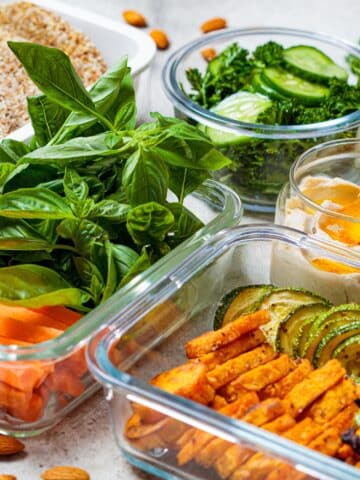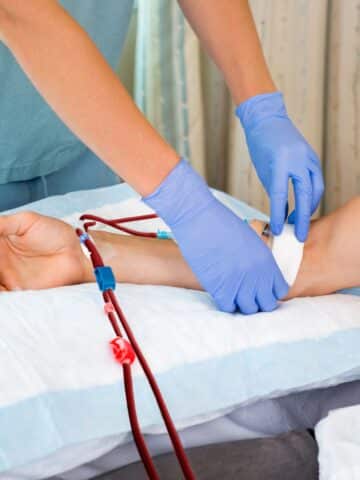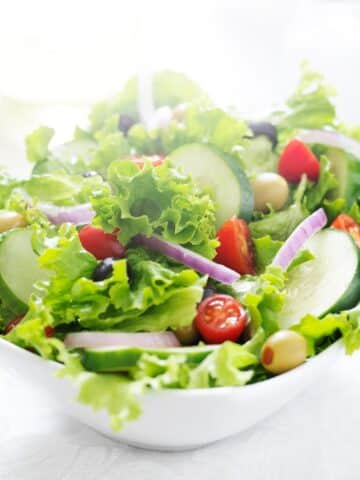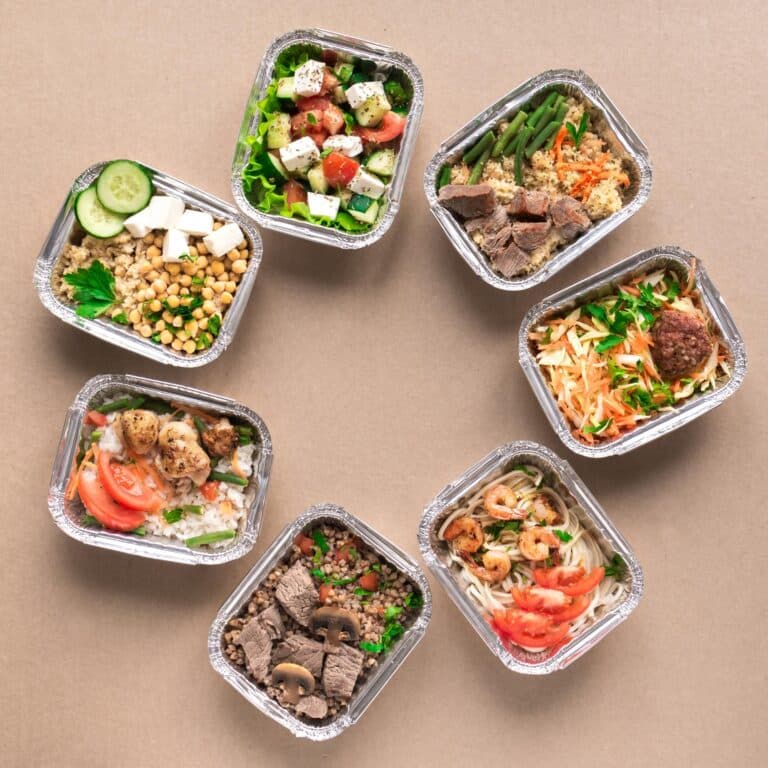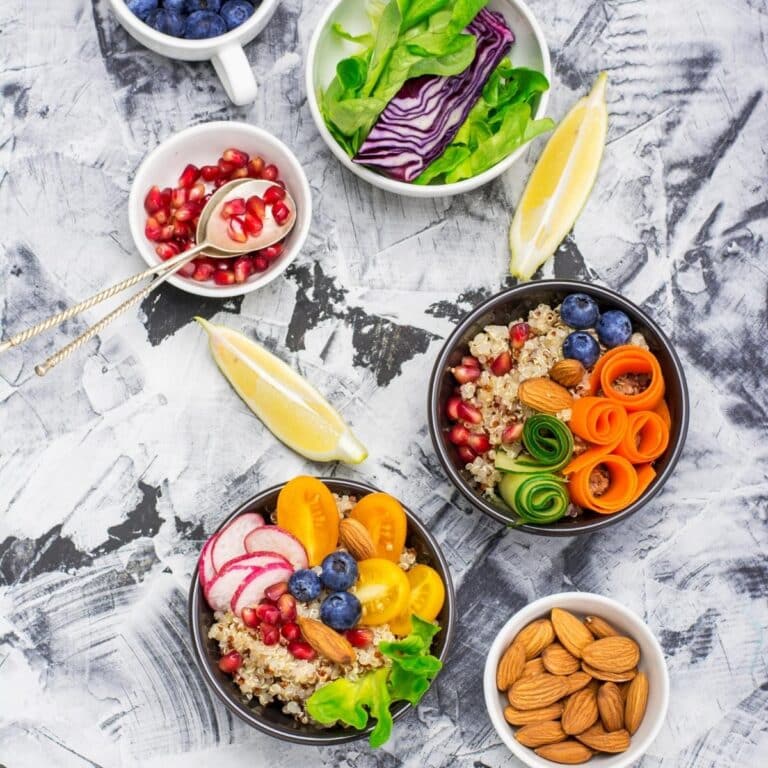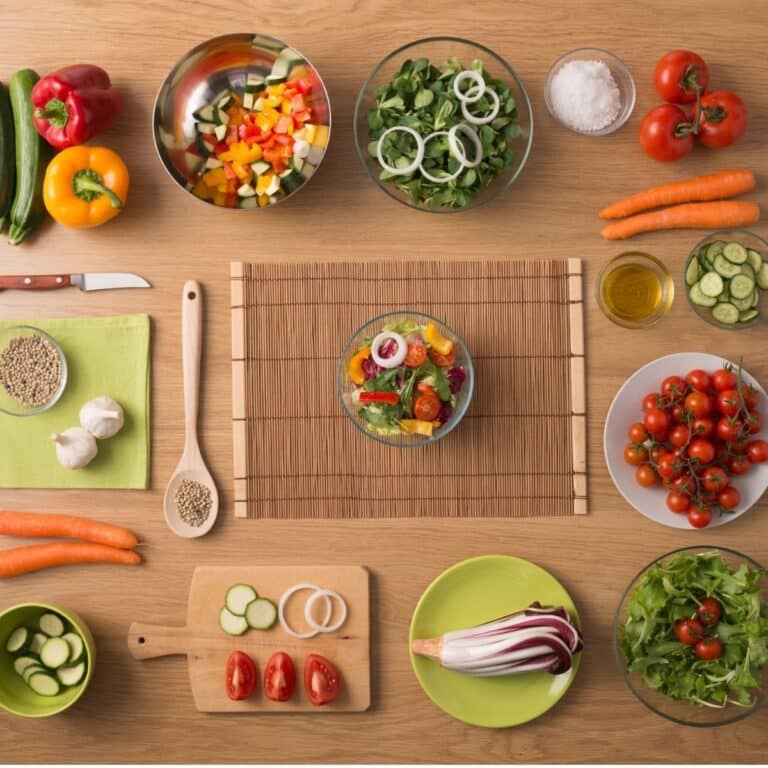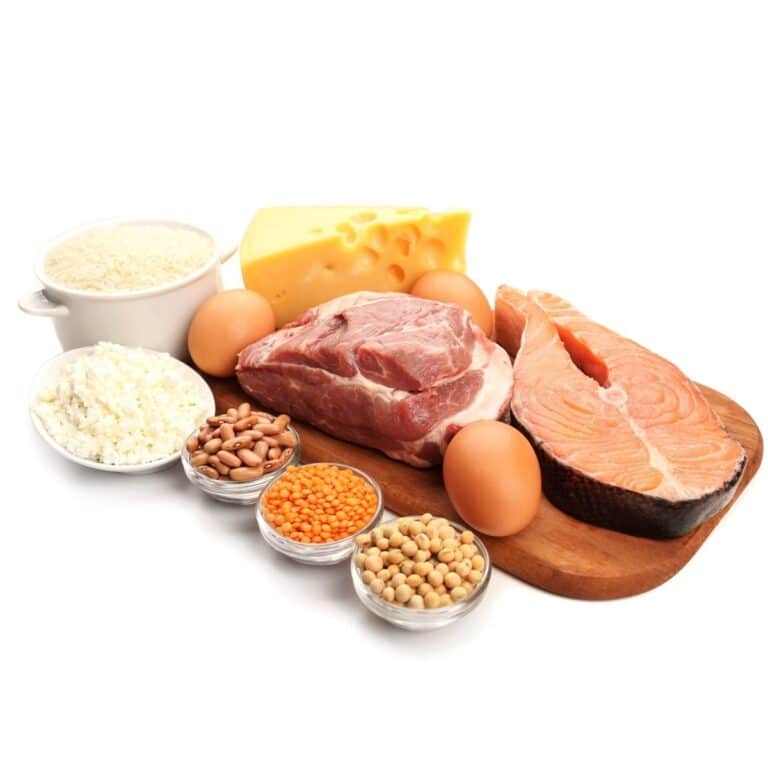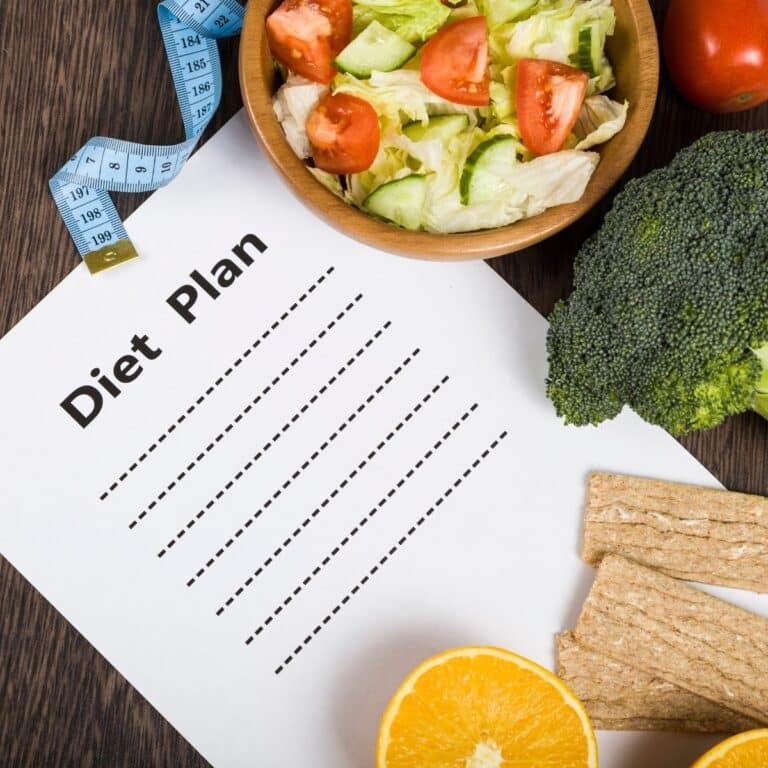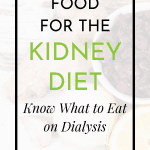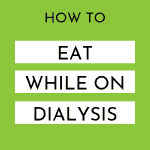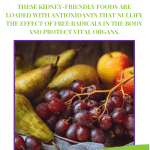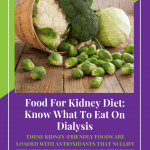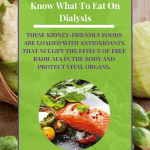What To Eat On A Dialysis Diet
Dialysis is a process used to remove excess waste and fluids from the body when the kidneys are unable to do so. A dialysis diet is one that is tailored specifically for individuals undergoing this medical procedure, ensuring they receive essential nutrients while avoiding foods that could be dangerous to their health.
Through careful selection of meals and kidney friendly snacks, it is possible to maintain adequate nutrition while receiving dialysis treatments. This article will discuss what to eat on a dialysis diet in order to promote overall health and well-being of patients.
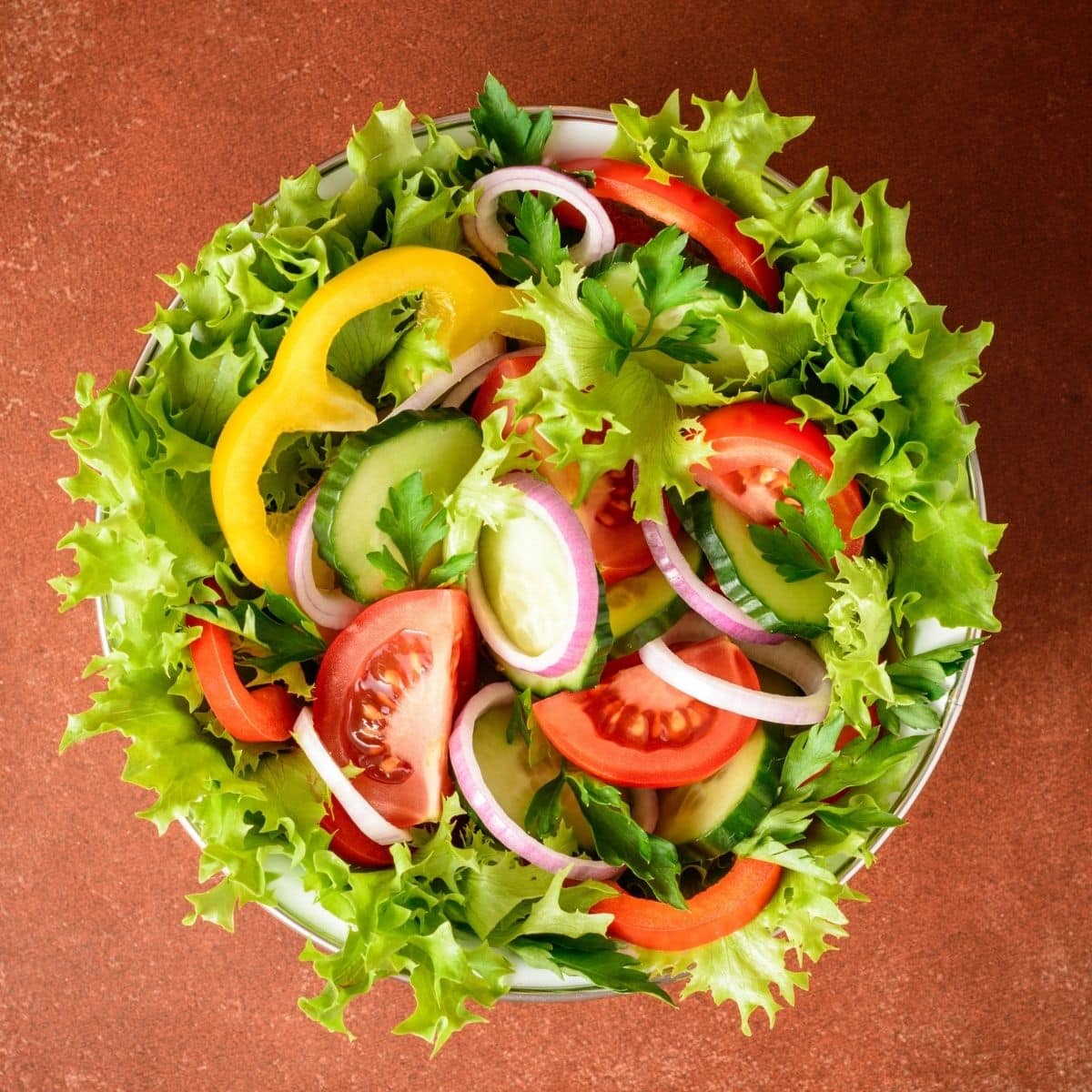
The purpose of a dialysis diet is twofold: firstly, it helps control levels of certain minerals such as sodium and potassium; secondly, it ensures proper fluid balance is maintained throughout the treatment period by getting excess water from the blood.
By following dietary guidelines, specific for dialysis, patients can maximize the benefits associated with treatments while minimizing potential risks related to improper nutrition.
Jump to:
What Stage Is A Dialysis Diet Needed?
Stage 3 Chronic Kidney Disease (CKD) is typically when a patient begins to experience signs of kidney dysfunction and needs to start following a dialysis diet. This diet is lower in sodium, potassium, and phosphorus, and it also helps to control high blood pressure, anemia, and fluid retention. We do have some options for best breakfast for ckd patients!
Stage 4 CKD is a more severe stage of CKD, when the kidneys are no longer able to do their job effectively. At this stage, patients need to adhere to a very strict renal diet, which may be lower in protein, carbohydrates, and fat, as well as strict sodium, potassium, and phosphorus restriction.
Stage 5 CKD, also known as end-stage renal disease (ESRD), is the most advanced stage of chronic kidney disease. At this stage, dialysis is often required, and patients must follow a dialysis diet. This diet is designed to reduce waste build-up, manage fluid balance, and maintain electrolyte levels.
For More Recipes and Ideas --->> Get Your Free Meals and Recipes That Are Perfect for Pre-Dialysis Diets, Pre-Dialysis with Diabetes, or Dialysis Diets.
Stage 3 CKD
During Stage 3 CKD, dietary restrictions and lifestyle changes become increasingly important for managing the condition. Sodium intake needs to be monitored carefully as too much salt will increase blood pressure or contribute to fluid retention.
At this stage, food choices should focus on nutrient-rich foods like fruits, vegetables, whole grains and lean proteins.
It is also essential to meet individual daily fluid needs by drinking enough water and avoiding sugary drinks that are high in calories and sugar. You will find yourself asking questions like "is romaine lettuce good for ckd patients?"
Understanding one's personal nutritional requirements is vital at this stage to ensure a healthy diet that supports kidney function. An awareness of appropriate food choices and an understanding of sodium levels may help manage symptoms related to CKD during Stage 3.
Stage 4 CKD
Stage 4 CKD entails severely impaired renal function and patients may present with increasingly uncomfortable symptoms such as swelling, itching, shortness of breath, and fatigue.
It is important for individuals with this stage of CKD to adhere to a strict diet that limits their intake of sodium and fluids in order to maintain fluid balance and regulate blood pressure.
How do I improve my stage of CKD? In addition, it may also be necessary to limit potassium and phosphorus intake as the reduced kidney function makes it difficult for the body to eliminate these. Achieving access for hemodialysis treatments is often done at this stage, and will require regular monitoring by medical professionals.
Adherence to dietary restrictions prescribed by healthcare providers is crucial as the consequences of not doing so can be dire at this stage.
In further progression of kidney disease, meeting nutritional needs becomes increasingly difficult due to decreased ability of the kidneys to filter wastes from the body effectively; therefore, extra steps need to be taken in order ensure an individual's health remains optimal.
Stage 5 CKD
Stage 5 CKD is the final stage of renal disease where dialysis or kidney transplant becomes necessary. It is considered to be end-stage renal disease. In this advanced stage, there are significant changes in fluid management and electrolyte balance that require careful monitoring by healthcare professionals and adherence to a dialysis diet.
This diet must be balanced with other treatments such as medications for controlling hypertension and diabetes, dietary supplements, as well as regular access to specialized dialysis centers. It's important to know about ckd and diabetes medications.
As these treatments become more complex and frequent over time, it is important for individuals with Stage 5 CKD to understand their medical needs and adhere to any prescribed diets or treatments given by healthcare providers.
Ultimately, it is essential for those living with Stage 5 CKD to maintain a healthy lifestyle supported by proper nutrition in order to maximize quality of life during this difficult time.
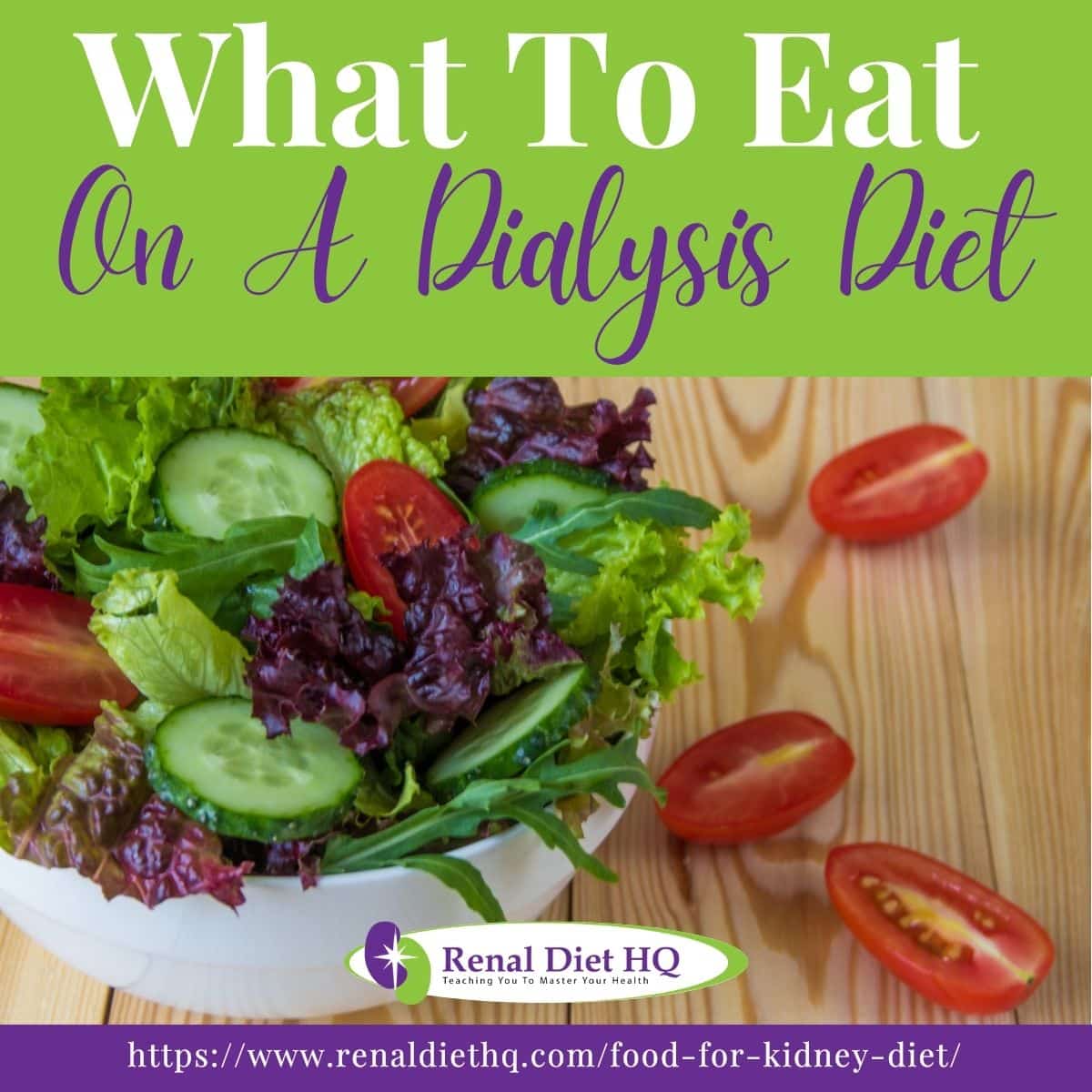
Protein-Rich Foods
Following a dialysis diet requires the right amount of protein. For regular dialysis patients, the recommended protein intake is generally 1.0-1.2 grams per kilogram of body weight per day.
Both hemodialysis and peritoneal dialysis patients are often advised to follow a high protein diet, combined with healthy sources of carbohydrates, to ensure comprehensive nutrition. This is because protein can be lost both through the process of dialysis treatment, as well as through accompanying inflammation.
Eggs are a great source of protein, containing about 6 grams of protein in one large egg. Fish, such as salmon, tuna, and sardines, are a highly recommended source of protein, containing approximately 22-23 grams of protein in a 3-ounce cooked portion.
Lean meats, such as beef, lamb, pork, and veal, are also high in protein, with 3 ounces containing about 21-28 grams of protein. Tofu, Greek yogurt, nuts, beans, quinoa, low-fat dairy, edamame, chickpeas, lentils, tempeh, peas, and seitan are all good sources of protein, providing 7-18 grams of protein per serving.
Eggs
Can you eat eggs on a renal diet? Eggs are a nutrient-dense, protein-rich food that can be cooked in many ways and eaten at any meal. The recommended cooking methods for eggs on a dialysis diet include boiling, poaching, and scrambling.
Omelets made with vegetables such as bell peppers, mushrooms or spinach make excellent protein choices for the breakfast meal plan. Eggs can also be hard boiled for snacks throughout the day if desired.
It is advisable to consume only two whole large eggs per day but egg whites can offer an alternative for those who want extra protein without the added fat from yolks.
Choosing appropriate portion sizes is key when planning meals; one serving size equals one large egg which should not exceed 2 servings per day due to its high cholesterol content.
Meal planning may become easier by including some simple recipes incorporating eggs into daily meals such as omelet muffins or frittatas which will help meet individual dietary needs while providing variety and flavor to everyday dishes.
With careful selection and proper portion control, adding eggs to your dialysis diet can be a great way to stay healthy while enjoying delicious nutritious meals every day.
Fish
Fish is another nutrient-dense, protein-rich food that can be cooked in various ways and consumed at any meal. Different types of fish are available including whitefish such as cod or haddock, oily fish like salmon or tuna, shellfish like shrimp or scallops and other types of seafood.
To ensure optimal nutrition, it is important to consider the nutritional content when selecting different types of fish; some varieties may have higher levels of omega 3 fatty acids which offer additional health benefits.
Proper cooking techniques should also be considered for safe consumption. Baking, grilling, and poaching are all recommended methods for preparing fish dishes.
When planning meals, appropriate portion sizes should be taken into account. One serving size equals 4 ounces (approximately 115 grams). Healthy snacks incorporating fish could include a salmon salad wrap or an avocado tuna melt sandwich.
With careful selection and proper portion control, adding different types of fish to your diet can provide great flavor while meeting individual dietary needs. Eating more fish can help make sure you get essential nutrients needed on a daily basis while providing variety and delicious options every day.
Also, think about whether or not you should take omega 3 for kidneys to help with your diet.
Fiber-Rich Foods
To effectively follow a renal diabetic diet, it is important to prioritize the consumption of dietary fiber. It is recommended to aim for a minimum of 25 grams of dietary fiber per day.
In addition to the nutritional advantages, incorporating more dietary fiber into your meals can aid in better blood sugar control by slowing down the digestion and absorption of carbohydrates. Including plant-based proteins such as beans or lentils can also assist with digestion and minimize gastrointestinal symptoms during dialysis.
Increasing your dietary fiber intake not only provides essential nutrients but also promotes a sense of fullness, which can help in achieving your weight management goals. Understanding kidney disease weight loss is also important.
Whole grains are an excellent source of fiber, containing both soluble and insoluble fiber. Legumes, such as beans, lentils, and peas, are also high in fiber as well as protein and other essential nutrients. One of my favorite recipes is this black bean and rice burrito.
Fruits and vegetables are also good sources of fiber, but vary in their content. Certain fruits, such as berries and apples, are especially rich in fiber. Vegetables like broccoli and spinach are also good sources of fiber. Eating a variety of fiber-rich foods can help the patient on dialysis meet their dietary needs.
Whole Grains
Whole grains provide an array of fiber-rich benefits for those on a dialysis diet. Consuming gluten free whole grain snacks, meals, and entrees can help reduce inflammation and aid in digestion. Patients must avoid processed foods such as white breads and pastas, but they can still enjoy the many varieties of gluten free and whole grain products available.
For breakfast options, oatmeal is high in protein and provides essential vitamins and minerals; buckwheat makes for an excellent hot cereal alternative or pancakes. Quinoa salads are a great lunch option that contain multiple nutrients along with its protein content. Additionally, wild rice makes for a hearty side dish to accompany any dinner entrée.
All these food choices not only offer substantial amounts of dietary fiber but also have numerous health benefits including improved cardiovascular health, increased energy levels, reduced inflammation, and better blood sugar control. Whole grains are a delicious way to get necessary nutrition while maintaining adherence to a dialysis diet.
Legumes
Legumes are another fiber-rich food that can be incorporated into dialysis diet restrictions. Grilling legumes, such as chickpeas and lentils, is an easy way to add flavor while retaining the nutrition of these foods, and without adding fats from oil. Adding spices or utilizing cooking methods like roasting or sautéing also helps enhance their taste.
Legume varieties provide essential nutrients such as protein, carbohydrates and fat along with vitamins and minerals. Consuming legumes regularly may help reduce cholesterol levels, lower blood pressure and improve digestion due to their high dietary fiber content.
Therefore, adding legumes in various forms to meals throughout the day can help ensure patients on dialysis receive all the necessary nutrition they need for optimal health.
Fiber-Rich Fruits
Fruits are another source of dietary fiber that can be included in a dialysis diet. Fresh fruit such as apples, pears and peaches offer an easy way to get a quick fiber-enriched snack while preserving the nutritional content of these foods.
Dried fruits, like raisins and dates, can also provide fiber. Canned fruits are also decent choices, but be sure to choose those with no added sugar or syrup for extra sweetness. Tropical fruits like papaya, mangoes and kiwi contain are also good for a refreshing snack.
Blending up various types of fresh fruit into smoothies is an excellent way to get multiple servings at once without having to eat large quantities.
Overall, incorporating a variety of different kinds of fruits daily offers numerous health benefits on top of their high fiber content while providing satisfying flavors that will perk you up even on dialysis treatment days.
Low Potassium Foods
What to eat on a dialysis diet? Fruits may be a good option for individuals on a dialysis diet but what you need to watch out for is their potassium content. The same goes for vegetables. While typically high in potassium, they can still be included in a dialysis diet when consumed in moderation.
Dairy products should be avoided on a dialysis diet as they are generally high in potassium. Grains are a good option for individuals on a dialysis diet as they are generally low in potassium.
For patients on dialysis, it is generally recommended to consume less than 3 grams of potassium per day.
Fruits and Potassium
When considering low carb low potassium foods for individuals on a dialysis diet, fruit consumption must be handled carefully. Fruits contain natural sugars and can contribute to an imbalance in blood sugar levels if eaten without moderation.
Furthermore, certain fruits are higher in potassium than others, so it is important to limit the amount consumed each day or week. Eating fresh fruit when possible is preferred over juice as this will help reduce added sugar intake.
Bananas, potatoes, and avocados should be avoided or consumed sparingly. On the other hand, apples, strawberries, tangerines, and plums typically have lower levels of the mineral, so they can be incorporated in a low potassium renal diet.
By eating in moderation and opting for low-potassium options, people on a dialysis diet can still enjoy many delicious fruits while keeping their electrolytes balanced.
Vegetables and Potassium
Vegetables are a great option for individuals on dialysis diets as they provide necessary vitamins and minerals. However, some vegetables have high potassium levels.
Leafy greens, beans, nuts, and starchy vegetables like winter squash are rich sources of potassium. Portion control and proper cooking techniques are key when consuming these vegetables to help regulate your blood potassium levels.
Cabbage, cauliflower, lettuce, and onions are some examples of vegetables that contain low potassium levels and are therefore ideal in a dialysis kidney diet.
Ultimately, having an understanding of which foods are appropriate for people on a dialysis diet allows them to make smart and nutritious food choices day after day.
Low Sodium Foods
Maintaining a healthy sodium intake is crucial when adhering to a dialysis diet. Excessive salt consumption can result in severe health issues, potentially necessitating hospitalization. Salt promotes fluid retention, leading to edema, elevated blood pressure, and breathing difficulties.
For dialysis patients, it is advisable to limit sodium intake to less than 2000 milligrams per day to mitigate these complications.
However, reducing salt intake doesn't mean compromising on flavor. You can enhance taste without increasing sodium levels by incorporating alternatives such as salt substitutes, lemon juice, or herbs.
It is essential to read labels carefully as a kidney patient, paying attention to serving sizes and ingredients. This practice helps monitor daily sodium intake, particularly for hidden sources like canned soups, processed meats, and condiments.
Low Sodium Fruits
Fruits can be a great addition to any diet, even for those on a dialysis diet. Fruits are an important part of a renal diet, so it is important to consider low sodium options when selecting fruits.
Strawberries, blueberries, and oranges are all low sodium fruits that can provide a range of vitamins and minerals. Additionally, portion control should be kept in mind when consuming fruits so that the intake of sodium is managed appropriately.
Frozen fruits offer an excellent alternative to fresh produce as they still provide plenty of vitamins and minerals. This is a great option especially for fruits that are not in season.
Sweetener alternatives such as honey or maple syrup can also be used when looking to add natural sweetness to healthy smoothies or other dishes containing fruit.
Furthermore, adding antioxidant-rich spices such as cinnamon or nutmeg may provide additional health benefits as well as unique flavors. What about when the holidays get here? There are plenty of low sodium low potassium recipes for the holidays.
Low Sodium Vegetables
Vegetables are a key component in any low sodium diet. They can provide a great source of fiber, vitamins, and minerals; however, some vegetables are naturally high in sodium, so it is important to select low sodium ones.
Kale, broccoli, and spinach are all low sodium vegetables that can offer a variety of health benefits. However, it is wise to still consume these in moderation due to their potassium content.
Whole grain pasta, rice alternatives such as quinoa and millet, and spicy dishes can be used to create flavorful meals without the need for added salt.
Low sodium vegetable juices also provide an excellent source of vitamins and minerals while sugar free snacks such as carrots or celery sticks make for great on-the-go options when avoiding processed foods.
When preparing vegetables at home, it is important to use herbs instead of table salt whenever possible to add flavor without increasing the amount of sodium consumed.
Low Sodium Protein Foods
In addition to low sodium vegetable dishes, a nutritious and balanced diet should also include sources of protein. Protein foods provide essential nutrients to the body, and there are a variety of low sodium protein foods available to choose from.
Lean meats, fish, and eggs are all examples of low sodium protein foods that can provide essential nutrients to the body.
Generally, it is best to stay away from processed meats such as deli meats, sausages, ham, and bacon as these contain high sodium levels which are not ideal for someone on a dialysis renal diet.
Fish based meals are an excellent source of omega-3 fatty acids and can be made with reduced salt levels when cooked at home. Plant based proteins such as beans, lentils and nuts offer similar health benefits while providing modest amounts of sodium compared to other animal products or processed snacks.
Whole grain carbohydrates like oatmeal, brown rice, quinoa or millet provide complex carbs that help fuel the body throughout the day without adding considerable amounts of sodium.
Healthy snacks such as sugar-free Greek yogurt, edamame, or unsalted almonds make for great on-the-go options when avoiding processed foods and added salts.
With careful planning and selection, individuals looking to adopt a low sodium lifestyle can find delicious meal ideas that incorporate both vegetables and lean proteins into their daily routine. Following a low sodium renal diet is also pretty common!

Low Phosphorus Foods
It is essential for individuals undergoing dialysis to exercise caution regarding their phosphorus consumption. Understanding the origins of phosphorus and determining appropriate limits are crucial aspects.
Daily phosphorus limits vary depending on individual requirements, fluid balance, hydration levels, and portion control. Generally, for individuals with kidney disease, the recommended limit is around 800-1000 mg per day, but adjustments may be made for those receiving dialysis.
Seeking guidance from a healthcare provider ensures personalized advice. By monitoring phosphorus sources and maintaining a balanced intake, one can strive for optimal health.
Proteins, such as dairy products, legumes, nuts, eggs, fish, and poultry, are the primary sources of dietary phosphorus. Plant-based proteins also contain phosphorus, albeit in lower quantities.
Dark unprocessed grains like oats, wheat germ, and bran contribute to phosphorus intake as well. Processed foods may contain phosphorus additives, necessitating label checks before consumption.
Fruits and Phosphorus
Fruits are a good source of many essential vitamins and minerals, but they also contain varying levels of phosphorus. Citrus fruits, such as oranges, lemons, and limes, are generally low in phosphorus. Other examples include fruits such as apples and strawberries which are viable options for those who need to maintain their phosphorus levels.
Canned fruits are convenient healthy snacks on the go especially due to their long shelf life compared to fresh ones. However, it is important to read labels carefully as some canned fruit products contain added preservatives or ingredients that contain phosphates.
Frozen fruits often retain nutrients comparable to that of fresh produce due to flash freezing at peak ripeness, making them a nutritious option in any dialysis diet. Dried fruits like raisins, apricots, and dates are nutrient-dense snacks with limited amounts of phosphorus compared to other foods.
Tropical fruits like mangoes, kiwi, lychee, and dragon fruit also offer unique flavors while adding beneficial antioxidants to a dialysis diet plan.
Vegetables and Phosphorus
Vegetables are also a good source of essential vitamins and minerals, but they too contain varying levels of phosphorus. Certain vegetables, such as celery and asparagus, are low in phosphorus.
Eating fresh, frozen, or canned vegetables provides essential vitamins and minerals for those on dialysis. Incorporating these foods into meal planning is key; combining them with other food sources like grains, proteins, and fruits in creative ways can help create nutritious meals.
It's also important to remember portion control when eating vegetables as some of them may contain high levels of phosphorus which could impact an individual's health negatively.
When cooking vegetables it is best to use healthier methods such as steaming or boiling over frying or sautéing to maintain their nutritional value and reduce fat content.
Healthy snacks like carrot sticks, celery, cucumber slices, and peppers make great nutritional additions throughout the day for added flavor and variety without jeopardizing your phosphorus levels. You'll also want to make sure you check out the vegetables low in phosphorus and potassium.
With careful consideration given towards choosing the right combination of ingredients while considering healthy cooking methods, individuals on a dialysis diet will find they have plenty of options available to meet their dietary needs.
Fish
What fish is good for kidneys? Fish is another nutritious and versatile food source for those on a low phosphorus diet. Fish meat is typically very low in phosphorus, however, some types of fish, such as salmon and sardines, are higher in phosphorus than others.
It is important to be aware of the phosphorus content of the different fish species in order to maintain a low-phosphorus diet. Fish dishes such as grilled, fried, white fish, or baked are great sources of protein that can be incorporated into meal plans without compromising phosphorus levels.
Additionally, incorporating these types of fish in creative dishes like tacos or salads can add flavor while still providing essential nutrients to the body. While frying and sautéing should generally be avoided due to their high fat content, baking and grilling provide healthier cooking options with minimal fat added.
Low-Fat Dairy Products
Low-fat milk is a great option for those on a dialysis diet, as it provides a good source of protein and calcium while being lower in fat than whole milk. Nonfat yogurt is another dairy product that is beneficial for those on a dialysis diet, as it is also low in fat but has a high amount of calcium and protein.
Skim cheese is a good choice for those on a dialysis diet, as it has low fat content and can be used as a healthy topping for salads or sandwiches. Additionally, it is a good source of calcium, protein, and other essential nutrients.
It is important to note that, when selecting these dairy products, it is important to look for ones that are low in added sugars, sodium, phosphates, and other additives. Furthermore, it is important to read labels carefully as a kidney patient to be sure that they meet the nutritional requirements for a dialysis diet.
Low-Fat Milk
Low-fat milk is an important component of a dialysis diet. A key factor in this type of dietary lifestyle is to reduce the amount of saturated fats and cholesterol found in traditional full-fat dairy products.
Low-fat milks are available with either one or two percent fat content, making it possible for individuals on dialysis to enjoy their favorite dairy based dishes while still adhering to the recommendations of their medical team.
Nonfat Yogurt
Nonfat yogurt is a viable alternative source of dairy for those on dialysis diets due to its low fat content. Bland flavors can be avoided by adding spices or other seasonings to the renal diet yogurt, allowing individuals to enjoy flavored yogurts without compromising their diet plan.
Furthermore, portion control should always be taken into consideration when consuming nonfat yogurt; measuring cups and spoons are helpful tools in this regard as they enable accurate servings sizes that will not contribute to unhealthy cravings.
This type of conscious eating also helps people maintain healthy nutrient levels while avoiding food binges. By incorporating these strategies into meal planning, individuals on dialysis diets can still find ways to enjoy flavorful alternatives like nonfat yogurt.
Skim Cheese
Which cheese is good for ckd patients? Like nonfat yogurt, skim cheese is a viable option for those on dialysis diets. As a low fat alternative to regular cheese, it can provide the same flavors and textures with fewer calories and saturated fats. However, individuals should be mindful of sodium levels when selecting different types of cheeses because they can vary greatly between brands.
Skim cheese is also an excellent source of calcium but portion control should still be taken into consideration in order to ensure that the individual maintains healthy nutrient levels without compromising their diet plan.
By incorporating these strategies into meal planning, people on dialysis diets have another delicious low-fat dairy product at their disposal which will help them achieve their dietary goals without feeling deprived.
Healthy Fats
Consuming healthy fats is a key part of a dialysis diet. Good fats such as olive oil, canola oil, and avocados can be beneficial for health.
On the other hand, bad fats such as saturated and trans-fats should be avoided.
Knowing the difference between good and bad fats can help ensure that a person on a dialysis diet is getting the right nutrition. You can ensure you're following the right dialysis diet guidelines.
Good Fats
It is important for people who follow a dialysis diet to include healthy fats in their eating habits. Reducing fat intake does not necessarily mean reducing the consumption of essential fatty acids that are necessary for maintaining optimum health. Good sources of healthy fats include reduced fat cheese, omega 3 oils, olive oil, flaxseed meal, and avocados.
Reduced fat cheeses provide a moderate amount of saturated fat but also contain beneficial monounsaturated and polyunsaturated fats as well as calcium which can help strengthen bones and aid in digestion.
Omega-3 oils such as those found in fish, nuts, seeds and supplements can reduce inflammation throughout the body while promoting heart health. Olive oil contains oleic acid which helps lower cholesterol levels while providing antioxidants that protect cells from damage.
Flaxseed meal is an excellent source of fiber along with alpha linolenic acid (ALA) - an essential fatty acid that helps regulate hormones, support brain function and help maintain a healthy immune system.
Avocados offer many nutritional benefits including high amounts of dietary fiber and vitamins E and K. However, avocados contain high levels of potassium, so patients on dialysis should consume this sparingly.
Incorporating healthy amounts of these foods into one’s dialysis kidney-friendly diet can help in promoting optimal functioning even while undergoing dialysis treatment sessions.
Bad Fats
Contrary to healthy fats, bad fats should be avoided when following a dialysis diet. Trans fats and hydrogenated oils are two types of unhealthy fats that can increase the risk for health issues such as heart disease or stroke.
These types of fat are found in processed foods (processed foods and CKD) like chips, crackers, and some baked goods and should be avoided whenever possible. High-fat dairy products may also contain trans fats or saturated fatty acids which can lead to elevated cholesterol levels if consumed in excess.
On the other hand, plant based oils such as soybean, corn and sunflower oil provide beneficial monounsaturated and polyunsaturated fatty acids that do not have adverse effects on one's health.
Therefore it is important to distinguish between good and bad sources of fat when trying to maintain a balanced diet while managing kidney disease.
Vitamins And Minerals
Vitamins and minerals are essential for maintaining good health as they facilitate proper functioning of the body at the cellular level. It is especially important for those on a dialysis diet to ensure that their daily intake of vitamins and minerals is adequate.
When it comes to vitamins, B-complex vitamins are particularly relevant for people on a dialysis diet. These include thiamine (B1), riboflavin (B2), niacin (B3) and pyridoxal phosphate (B6). They help break down carbohydrates, proteins and fatty acids in order to release energy from food.
Vitamin C can also play an important role by helping reduce inflammation caused by free radicals. Meanwhile, calcium helps maintain strong bones while magnesium supports nerve transmission.
To get these essential vitamins and minerals, it’s best to consume foods such as fruits, vegetables, whole grains and legumes – this way you can avoid taking vitamin supplements which can potentially harm you when used in excess.
Food For Kidney Diet FAQs
Kidneys play a vital role in regulating the level of potassium, sodium and phosphorus in the body. In addition to that, they control the amount of fluid eliminated from the body.
When on dialysis, your kidneys are unable to perform these functions and hence the diet of a person undergoing dialysis should exclude any food items that are rich sources of the above-mentioned nutrients.
Accordingly, you should severely limit all high sodium foods such as table salt, potato chips as well as canned and processed foods from your diet. You should also take care to avoid cheese, sardines, nuts and caramels that are high on phosphorus.
When on a dialysis diet, it is important to consider how often one should eat in order to best manage the condition. Generally speaking, individuals on a dialysis diet will need to reduce their sodium, fluid intake and protein intake while also increasing their vitamin and carbohydrate intake.
This can be achieved by eating small meals every 2-3 hours throughout the day as this helps maintain blood sugar levels and decreases feelings of hunger. Additionally, snacks high in nutrients such as fruits or vegetables may be beneficial for those who struggle with feeling full from regular meal times.
A dialysis diet includes fluid management strategies that limit total daily intake of fluids, specific levels of carbohydrates, protein sources with reduced potassium, phosphorus, and sodium intakes.
In contrast, a general healthy eating plan focuses on nutrient-dense foods while reducing added sugars, unhealthy fats and processed ingredients without stressing limits for any individual macronutrient or mineral.
Additionally, dialysis diets are tailored based on an individual's needs which may include higher amounts of protein sources than what is recommended for the general population.
Therefore, it is essential to consult with your healthcare provider before making any changes to your dietary routine in order to ensure you are following an appropriate nutrition plan that meets both your personal health goals as well as your medical requirements.
Dialysis patients should work with a qualified renal dietitian to chart a healthy meal plan containing the right food for kidney diets for them.
The top food choices that medical experts recommend to be included in the diet of a kidney patient include vegetables such as: cabbage, cauliflower, garlic, onion, cranberries, blueberries, strawberries, apples, raspberries, cherries, red grapes, fish, olive oil and egg whites.
These kidney-friendly foods are loaded with antioxidants that nullify the effect of free radicals in the body and protect vital organs. In addition to that, these foods have low sodium, potassium and phosphorus content. That makes these foods for a kidney diet a very important key to good taste and good health.
Food For Dialysis Kidney Diet Meals Are An Important Part Of Your Treatment Plan
Medical research has found conclusive evidence about the link between chronic diseases including kidney problems and their aggravation by consuming the wrong foods.
Thus, if you or a member of your family is on dialysis or suffering from chronic kidney disease, it is extremely important to include healthy food items that are recommended above in the diet. These kidney friendly foods help in reducing the risk of inflammation and heart diseases.
However, before making any changes to your diet, you should consult your doctor and identify the best foods for following a pre-dialysis renal diet.


